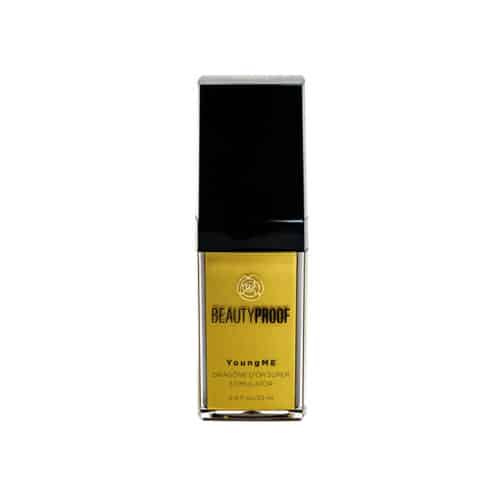CREPEY SKIN
WHAT + HOW
Crepey skin appears when there is a breakdown in the dermal epidermal junction (DEJ). The DEJ is the area between your epidermis and dermis. Imagine a sheet on top of a mattress. The sheet is your outermost layer of skin, the epidermis. The mattress is your dermis. In healthy, young individuals, the epidermis and dermis are glued together by a specific type of collagen and your skin appears “plumped from within” because it is like a bed sheet “glued” onto a thick mattress.
The attachment of layers between the epidermis and dermis become “loose.” Just like a bed sheet scrunched up on top of your mattress. Skin then appears like a thin sheet of “crepe” paper. This is your thin epidermis lacking the support and attachment of your dermis. Kind of complicated, but the point is, crepey skin is the result of a weakened attachment between the layers of your skin caused by a decline in a specific type of collagen, Collagen IV.
Collagen IV helps to support the DEJ and anchor the layers together. When the attachment weakens, fewer nutrients are supplied to your outer skin cells. Your outer skin cells receive nutrients and oxygen from your dermis. If your DEJ weakens, it is more difficult for your skin to pass on the nutrients your epidermis needs to stay healthy and youthful. Wrinkles and creases develop from a breakdown of collagen deep inside the dermis. Crepiness results from a “bonding” breakdown between your thin epidermis and thicker dermis.
Crepiness is associated with intrinsic aging; in other words, experts have concluded that everyone will suffer from it at some point during their lifetime due to internal factors. Today there are compounds that will help to rebuild your skin and significantly decrease crepiness. There are newly developed peptides, growth factors and other nutrients which specifically target Collagen IV. Increasing Collagen IV allows the skin to “mend” itself, thus repairing crepiness and allowing nutrients to pass through your dermis and into your epidermis.
PRODUCT RECOMMENDATIONS
- CellXCell® Lifting + Firming Serum
- Dragōne D’Or® Super Stimulator
- Perfect Pearl Foaming Cleanser
- Youth Intense Stimulating Moisture Complex
TREATMENT
Look for products that increase collagen and elastin and those that will repair the dermal epidermal junction. If a product has these three words “dermal epidermal junction (or DEJ)” on the package, it was developed by a chemist who understands the biology of crepiness and it will most likely include newer growth factors and peptides that will repair crepiness.
Practice skin smoothing or regular exfoliation and always use a good moisturizer.
-
DIET
Research shows that supplementing your diet with 40mg of soy, twice daily, will help to repair visible crepiness. There are an overwhelming number of studies which have concluded that soy has anti-aging effects. These studies include both dietary supplementation and topical application.
-
SUPPLEMENTS
The Journal of Nutritional Science + Vitaminology, published the results of a clinical trial conducted to evaluate the effects of soy on women in their late 30’s to early 40’s. The women were split into 2 groups. One group received 40 mg of soy isoflavone aglycone per day, the other a placebo. Using highly quantifiable instruments, skin micro relief was measured around the crow’s feet area. This is the first area to show crepiness. Their skin elasticity was also tested. In both the wrinkle area ratio (wrinkle size) and elasticity (ability of skin to snap back) of the participants who ingested the soy supplements showed significant reduction in wrinkles and a significant increase in elasticity, as compared to those in the placebo group.
-
TOPICALS
The number of studies for topical application of soy is too numerous to count! If you read my book, Breaking the Age Code, Young Skin for Life, you will learn that a huge benefit of prescription tretinoin (Retin-A) is that it halts the enzymes which age your skin, Matrix metalloproteinases (MMPs). Topical soybean extract has been compared to prescription tretinoin (Retin-A) for its ability to thwart these aging enzymes and was discovered to be as effective as prescription retinoids! Soy is proven effective in increasing elasticity and diminishing wrinkles and crepey skin around the eye area.



